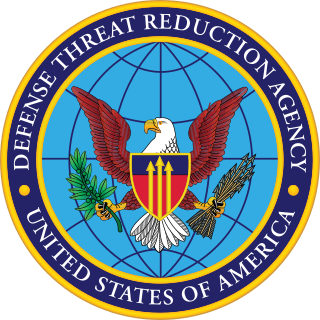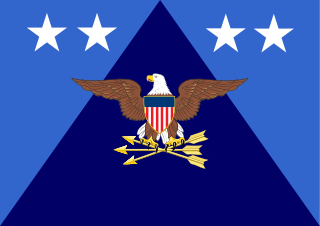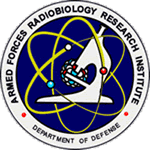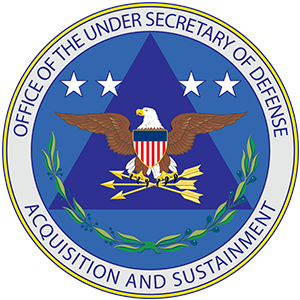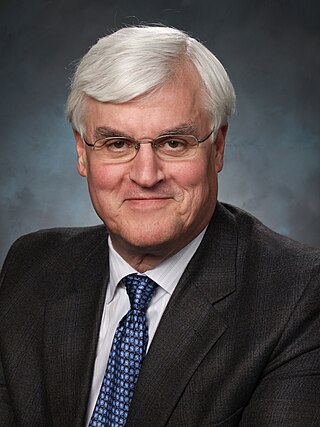| Assistant Secretary of Defense for Nuclear, Chemical, and Biological Defense Programs | |
|---|---|
 Emblem of the Assistant Secretary of Defense for Nuclear, Chemical and Biological Defense Programs | |
 Flag of an Assistant Secretary of Defense | |
| Office of the Secretary of Defense | |
| Style | Sir/Madam Assistant Secretary (formal address in writing) |
| Reports to | Under Secretary of Defense for Acquisition and Sustainment Deputy Secretary of Defense United States Secretary of Defense |
| Appointer | The President with the advice and consent of the Senate |
| Term length | No fixed term |
| Formation | 2009 |
| Succession | 16th in SecDef succession |
| Deputy | The Deputy Under Secretary |
| Salary | Level IV of the Executive Schedule |
| Website | www |
The Assistant Secretary of Defense for Nuclear, Chemical & Biological Defense Programs, or ASD(NCB), is the principal adviser to the Secretary of Defense, Deputy Secretary of Defense and the Under Secretary of Defense for Acquisition and Sustainment on policy and plans for nuclear, chemical, and biological defense programs.
Contents
The Assistant Secretary of Defense for Nuclear, Chemical & Biological Defense Programs develops policies, advice, and recommendations on nuclear energy, nuclear weapons, and chemical and biological defense, including:
- nuclear weapons;
- chemical, biological, radiological, and nuclear (CBRN) medical and non-medical defense;
- safety and security of chemical and biological agents;
- safety, surety, security, and safe destruction of the current chemical weapon stockpile;
- nuclear, chemical and biological arms control activities and related plans and programs.
The Assistant Secretary of Defense for Nuclear, Chemical & Biological Defense Programs also serves as DoD coordinator and funding administrator for nuclear and conventional physical security equipment research, development, test, and evaluation programs executed by the Military Departments and the Defense Threat Reduction Agency (DTRA). [1]
Before the National Defense Authorization Act for Fiscal Year 2011 on January 7, 2011, the Assistant Secretary of Defense for Nuclear, Chemical & Biological Defense Programs was known as the "Assistant to the Secretary of Defense for Nuclear & Chemical & Biological Defense Programs". [2]
Three Deputy Assistant Secretaries of Defense report to the Assistant Secretary of Defense for Nuclear Chemical & Biological Defense Programs:
- the Deputy Assistant Secretary of Defense for Chemical and Biological Defense (DASD(CBD))
- the Deputy Assistant Secretary for of Defense for Nuclear Matters (DASD(NM))
- the Deputy Assistant Secretary of Defense for Threat Reduction and Arms Control (DASD(TRAC))
In addition, the Director of the Defense Threat Reduction Agency reports directly to the Assistant Secretary of Defense for Nuclear, Chemical & Biological Defense Programs.
The Deputy Assistant Secretary of Defense for Chemical and Biological Defense executes day-to-day management, governance, and resourcing of the Chemical and Biological Defense Program (CDBP) and coordinates with the Executive Agent (EA) for Chemical and Biological Defense (CBD) and other Office of Secretary of Defense components using the procedures and governance framework in DoDI 5160.01.
The Deputy Assistant Secretary of Defense for Chemical and Biological Defense oversees development of Chemical, Biological, Radiological and Nuclear (CBRN) defenses to protect national interests at home and abroad, handling Department of Defense efforts related to:
- science & technology,
- advanced development
- test and evaluation of chemical, biological, radiological and nuclear defenses
- the Chemical and Biological Defense Program Objective Memorandum (POM). [3]
The Deputy Assistant Secretary for Nuclear Matters is primarily the focal point for activities and initiatives related to sustaining a safe, secure, and effective nuclear deterrent and countering threats from nuclear terrorism and nuclear proliferation. This office serves as a primary point of contact for Congress, other agencies, and the public for those programs.
The Deputy Assistant Secretary for Nuclear Matters (DASD(NM)) fulfills the nuclear weapons roles, responsibilities, and functions for the Assistant Secretary of Defense for Nuclear, Chemical and Biological Defense Programs (ASD(NCB)). The Office of the Assistant Secretary of Defense for Nuclear, Chemical, and Biological Defense Programs/Nuclear Matters (OASD(NCB/NM)) is the focal point of the Department of Defense for the U.S. nuclear deterrent. In this capacity, Nuclear Matters is the primary DoD point of contact for Congress, the interagency, and the public and for allies and foreign partners on issues related to the U.S. nuclear stockpile and the integration and alignment of U.S. nuclear weapons and weapons systems. To perform these functions, Nuclear Matters is composed of representatives from all areas of the nuclear community, including the U.S. Navy, the U.S. Air Force, the National Guard Bureau, the United States Nuclear Command and Control Systems Support Staff, the Defense Threat Reduction Agency, the Department of Energy, the National Nuclear Security Agency, Los Alamos National Laboratory, Lawrence Livermore National Laboratory, Sandia National Laboratories, the Kansas City Plant, and the National Security Agency. [4]
The Deputy Assistant Secretary of Defense for Threat Reduction and Arms Control is the principal adviser to the Assistant Secretary for Defense for Nuclear, Chemical & Biological Defense Programs for
- acquisition oversight, implementation, and compliance with nuclear, biological, and chemical treaties;
- cooperative threat reduction; chemical demilitarization programs;
- building global partner capacity to counter weapons of mass destruction.
The OASD(NCB/TRAC) exercises oversight of the Defense Threat Reduction and Agency-executed Cooperative Threat Reduction Program and provides oversight of the Chemical Demilitarization Program. [5]
This office also:
- oversees implementation of and compliance with existing and prospective nuclear, biological, and chemical arms control agreements in accordance with DoDD 2060.1;
- integrates programs to combat proliferation weapons of mass destruction; and
- assists the Deputy Assistant Secretary of Defense for Nuclear, Chemical & Biological Defense Programs as Executive Secretary of the Counterproliferation Program Review Committee (CPRC) and Chair of the Standing Committee of the CPRC. [6]




